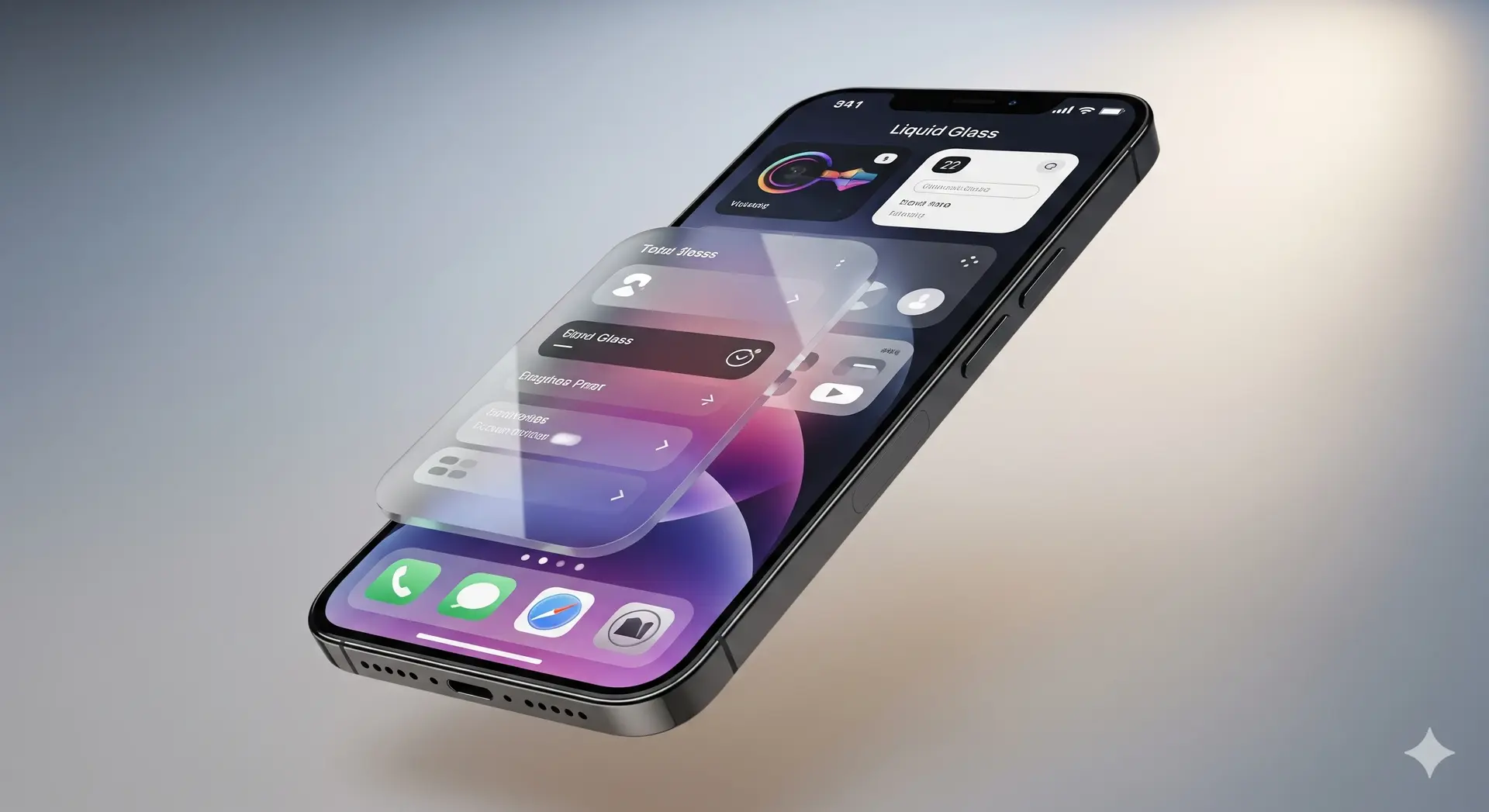iOS 26 design represents Apple’s most significant visual overhaul since iOS 7’s flat design revolution in 2013. Apple today previewed iOS 26, a major update that brings a beautiful new design, intelligent experiences, and improvements to the apps users rely on every day. Announced at WWDC 2025, this isn’t just another incremental update – it’s Apple’s answer to user demands for a fresher iPhone experience.
The comprehensive redesign affects every corner of the iOS experience, from core system apps to fundamental interface elements. After months of speculation about what Apple would announce, the company has delivered what it calls its most significant design update in years – a visual transformation that extends across their entire device ecosystem.
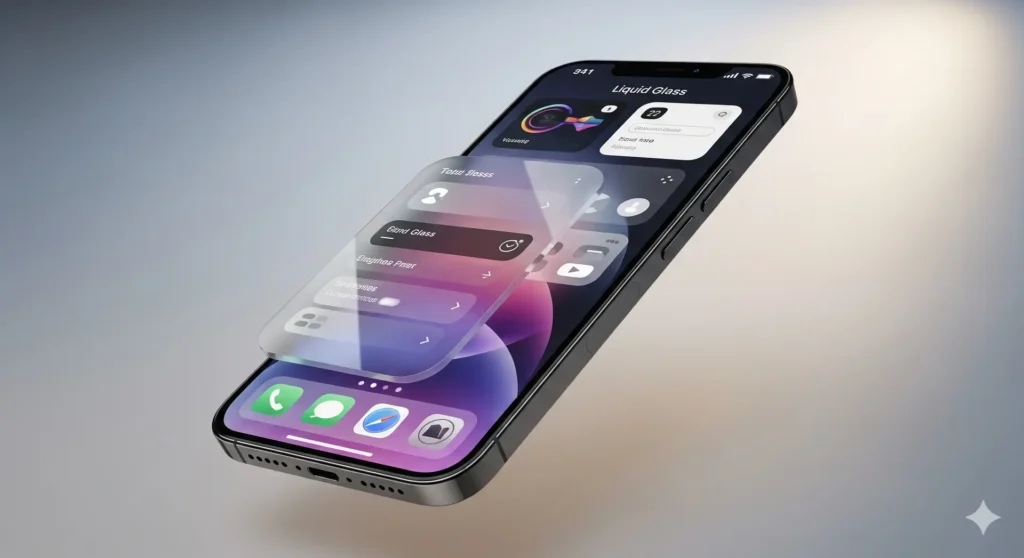
TL;DR:
Apple previewed a new software design, crafted with Liquid Glass, that makes apps and system experiences more expressive and delightful. iOS 26 launches this September with the biggest visual changes since iOS 7, alongside enhanced Apple Intelligence features and improved core apps.
Apple’s Liquid Glass Design Language Officially Confirmed
Apple previewed a new software design, crafted with Liquid Glass, that makes apps and system experiences more expressive and delightful. The Liquid Glass design language isn’t just marketing speak – it represents a fundamental shift in how Apple approaches iOS interface design.

According to Apple’s official announcement, the Liquid Glass design brings depth and dimensionality to interface elements while maintaining the clarity and simplicity iOS users expect. The design philosophy extends beyond iOS to iPadOS, macOS, watchOS, and visionOS.
At WWDC 2025, Apple unveiled iOS 26, and with it, a massive visual overhaul driven by a new design language: “Liquid Glass.” This isn’t just an update; it’s the biggest UI refresh since iOS 7, extending across iPhone, iPad, Mac (macOS Tahoe 26), Apple Watch (watchOS 26), and Apple Vision Pro.
The timing makes sense. Apple needed a unified design language that works across their expanding device ecosystem, from traditional devices to the Apple Vision Pro headset. Liquid Glass provides that consistency whilst giving each platform room for platform-specific optimisations.
New Preview App Finally Arrives on iPhone
One of the most practical additions to iOS 26 is something many users have been requesting for years: a dedicated Preview app. iOS 26 finally introduces a dedicated Preview app, letting you view PDFs, images, and documents without resorting to third-party tools. This app offers quick markup tools, annotation features.
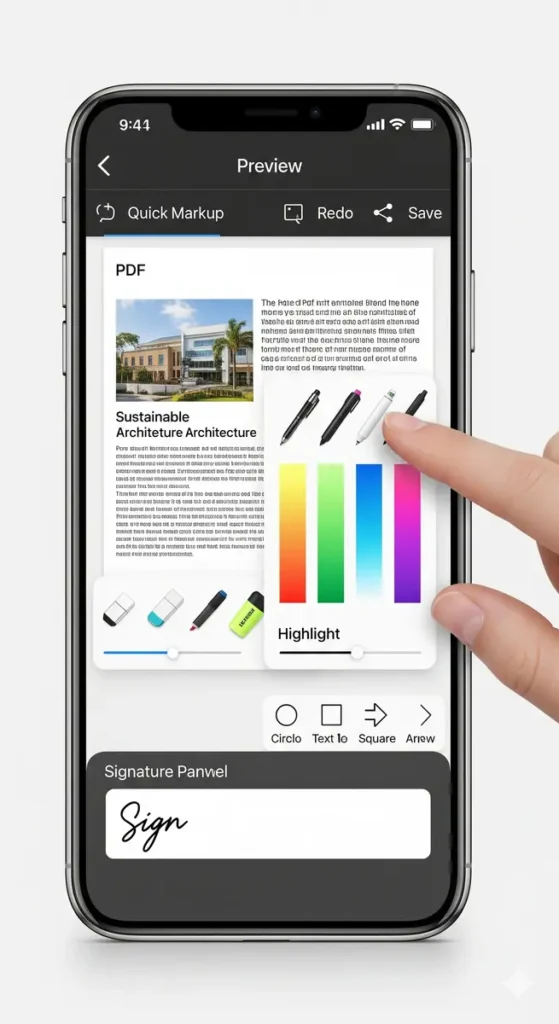
The new Preview app brings iPhone functionality in line with what Mac users have enjoyed for years. You can now view PDFs, mark them up with annotations, and handle document workflows without jumping between multiple third-party apps.
This addition signals Apple’s recognition that iPhones are increasingly used for professional work. The Preview app includes tools for signing documents, highlighting text, and adding notes – features that make iPhone a more viable option for business users who previously relied on laptops for document management.
Enhanced Apple Intelligence Features
At WWDC25, Apple unveiled new Apple Intelligence features coming to iPhone, iPad, Mac, Apple Watch, and Apple Vision Pro. Apple today announced new Apple Intelligence features that elevate the user experience across iPhone, iPad, Mac, Apple Watch, and Apple Vision Pro.
The Apple Intelligence improvements in iOS 26 focus on practical applications rather than flashy demonstrations. According to Apple’s official press release, the enhanced features work entirely on-device, maintaining Apple’s privacy-first approach.
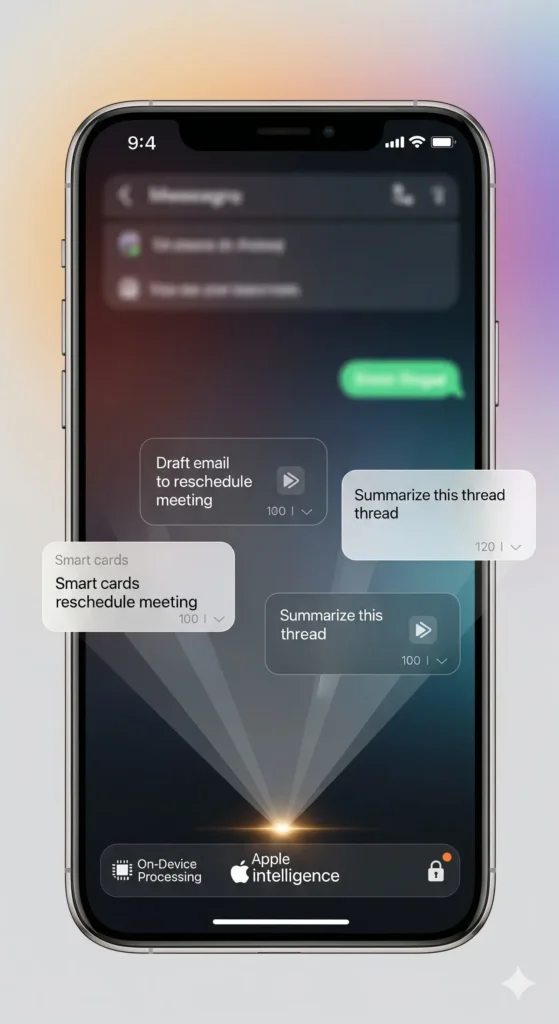
However, We’ve confirmed that this means 2026, though we don’t have a firm date. As a refresher, the new Siri features that have been delayed include understanding the user’s personal context, on-screen awareness and deeper per-app controls. Some of the most anticipated Siri improvements won’t arrive until 2026.
The Apple Intelligence features remain limited to iPhone 15 Pro models and the iPhone 16 series when it launches. Older devices will receive the visual design updates but won’t have access to the AI-powered capabilities that require Apple’s most recent chipsets.
iOS 26 Design Update Affects Core System Apps
Apple has redesigned several core system apps to showcase the Liquid Glass design language. The Messages app receives visual updates that make conversations feel more engaging, whilst Mail gets organisational improvements that help manage busy inboxes.
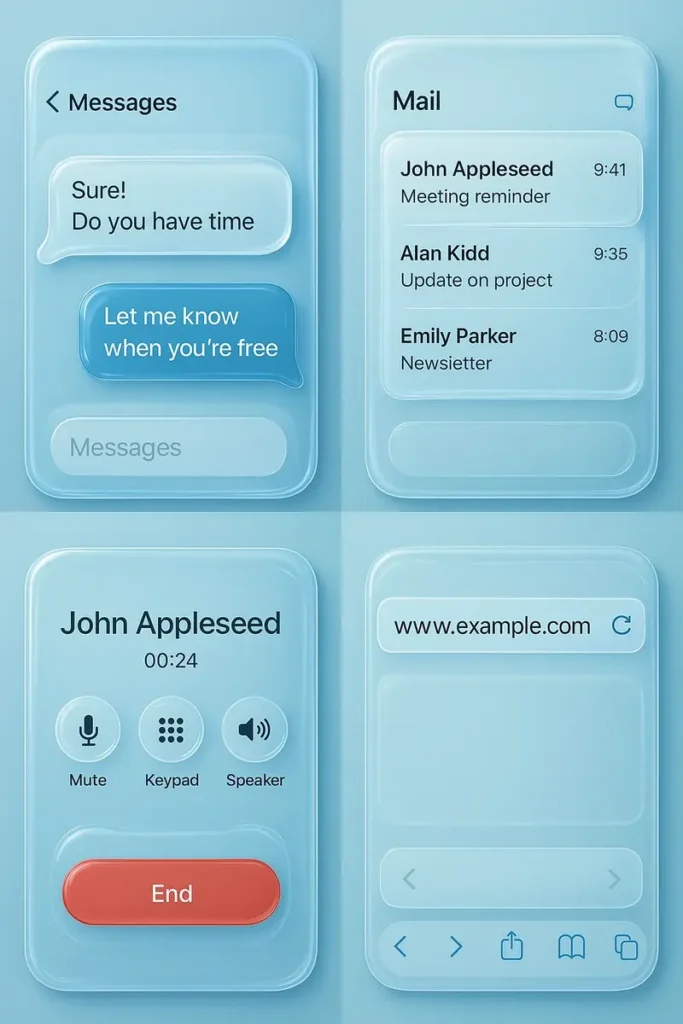
The Phone app benefits from cleaner interface elements that make important controls more accessible during calls. These aren’t revolutionary changes, but they represent Apple’s attention to the details that iPhone users interact with dozens of times daily.
Safari receives performance improvements and interface refinements that take advantage of the Liquid Glass design. Web browsing feels more fluid, with smoother scrolling and better visual feedback when interacting with web content.
Device Compatibility Remains Broad
Apple has maintained generous device compatibility for iOS 26. The update supports devices from iPhone 12 and newer, meaning users with phones as old as 2020 can experience the new design language.
Supported iPhone Models:
- iPhone 17 series (launching September 2025)
- iPhone 16 series
- iPhone 15 series
- iPhone 14 series
- iPhone 13 series
- iPhone 12 series and iPhone 12 mini
Devices Losing Support:
- iPhone 11 and iPhone 11 Pro series
- iPhone XS and iPhone XS Max
- iPhone XR
- All earlier iPhone models
The compatibility cut-off reflects the processing requirements for Liquid Glass animations and Apple Intelligence features. Older devices simply lack the computational power to run the new interface smoothly whilst maintaining good battery life.
Year-Based Naming System Explained
The same goes for iPadOS, watchOS, macOS and so on. The versions will be named for the year after major annual OS updates (so iOS 26 for the version that arrives in fall 2025 etc), but it should still help mitigate some confusion as to which is the current version.
Apple’s switch to year-based naming (iOS 26, macOS 26, watchOS 26) aims to reduce confusion about which version is current across their device ecosystem. This brings iOS naming in line with macOS and other Apple operating systems.
The new naming system makes it easier for users and developers to understand compatibility and feature availability across Apple’s expanding device lineup. When someone mentions “iOS 26 features,” it’s immediately clear they’re discussing the 2025 release.
Beta Testing and Release Timeline
iOS 26 developer beta became available immediately following Apple’s WWDC 2025 keynote in June. The public beta launched in July, allowing non-developers to test the new features before the official release.
Based on Apple’s traditional release schedule, iOS 26 will launch publicly in September 2025 alongside the iPhone 17 series. This gives developers several months to update their apps to take advantage of Liquid Glass design elements.
The beta testing period has been crucial for Apple to refine the new visual elements and ensure they work smoothly across all supported devices. Unlike some previous iOS releases, Apple appears to be taking a measured approach to ensure stability at launch.
Performance and Battery Impact
One concern with major visual overhauls is their impact on device performance and battery life. Apple has designed Liquid Glass to scale appropriately based on device capabilities, ensuring that older supported devices don’t suffer performance penalties.
iPhone 12 and iPhone 13 users will see simplified versions of some Liquid Glass effects, whilst iPhone 15 Pro and iPhone 16 models will display the full visual experience. This scaling approach helps maintain smooth performance across Apple’s supported device range.
The visual improvements are paired with under-the-hood optimisations that should actually improve battery life for many users. Background app management has been refined to reduce unnecessary processing, particularly benefiting users with older supported devices.
What Developers Need to Know
The Liquid Glass design language provides new interface elements and APIs for app developers. Apps don’t need immediate updates to work with iOS 26, but they’ll need updates to fully integrate with the new design aesthetic.
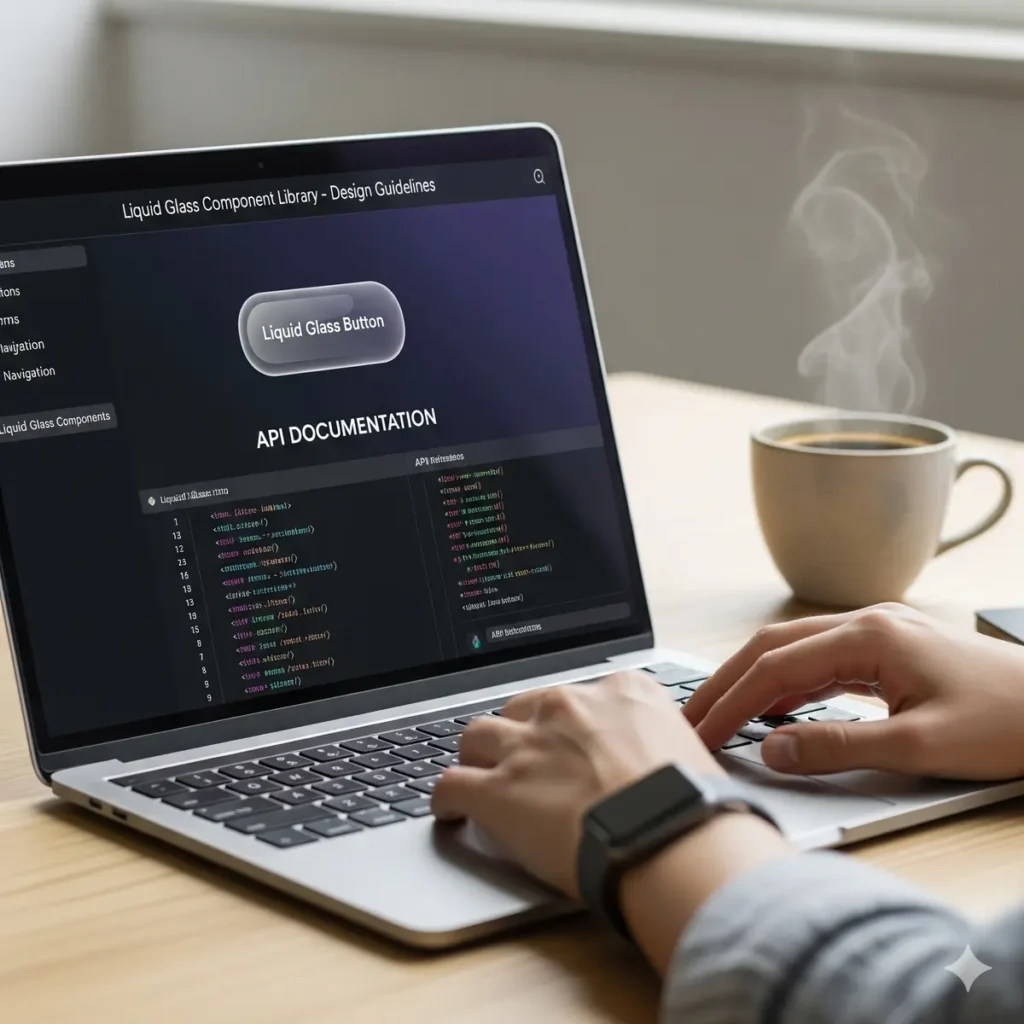
Apple has provided comprehensive documentation and design guidelines to help developers adopt Liquid Glass elements in their apps. The transition period allows developers to update their interfaces gradually rather than rushing to meet the iOS 26 launch deadline.
Third-party apps that embrace the Liquid Glass design philosophy will feel more integrated with the system, whilst apps that don’t update may feel outdated compared to Apple’s redesigned core apps.
Key Takeaways
• Official Liquid Glass: Apple has officially introduced the Liquid Glass design language, representing the biggest visual update since iOS 7
• New Preview App: iPhone finally gets a dedicated Preview app for viewing and annotating PDFs and documents
• Enhanced Apple Intelligence: New AI features coming to supported devices, though some advanced Siri capabilities are delayed until 2026
• Broad Compatibility: iOS 26 supports devices from iPhone 12 onwards, though older models get simplified visual effects
• Year-Based Naming: Apple’s new naming system (iOS 26, macOS 26) reduces confusion across their operating system lineup
Preparing for iOS 26
Current iPhone users should ensure they have adequate storage space for the iOS 26 update. The visual overhaul includes new system assets and animations that require additional storage compared to typical iOS updates.
Users with devices older than iPhone 12 should consider upgrading to experience the full iOS 26 design update. Whilst older devices will continue receiving security updates, they’ll miss out on Apple’s most significant interface evolution in over a decade.
The September 2025 launch timeline gives users several months to decide whether to upgrade their hardware or prepare their current devices for the update. Those interested in testing the new features can join Apple’s public beta programme.
Also Read: Apple Hits Pause: Why Your iPhone 18 Wait Just Got Longer
The Broader Apple Ecosystem
iOS 26’s Liquid Glass design represents more than just visual polish – it’s Apple’s foundation for their expanding device ecosystem. The consistent design language across iPhone, iPad, Mac, Apple Watch, and Vision Pro creates seamless transitions between devices.
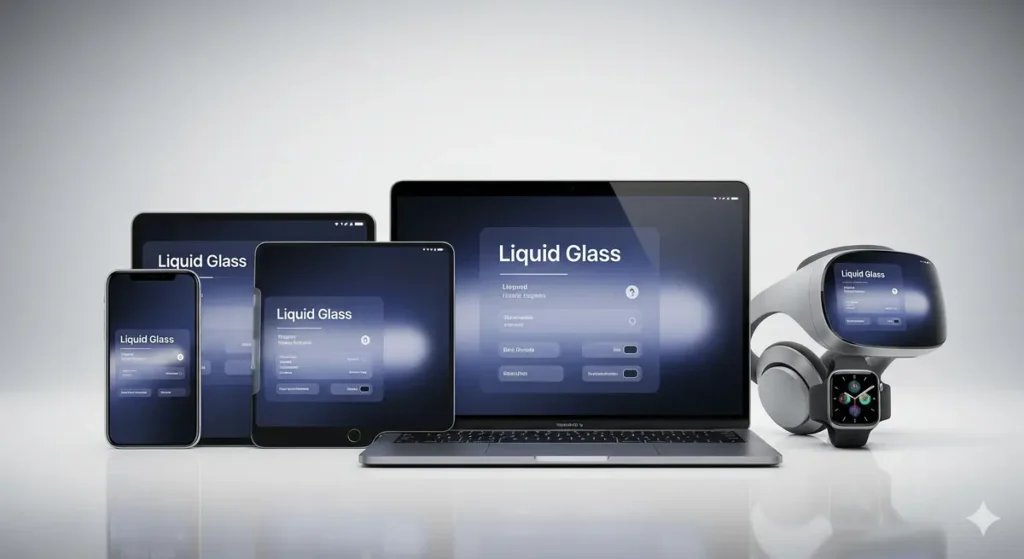
This design unification positions Apple to compete more effectively with ecosystem-focused competitors whilst providing users with more consistent experiences across their Apple devices. The visual coherence makes switching between devices feel natural rather than requiring mental adjustment to different interface paradigms.
FAQs:
Q1: When will iOS 26 be available to download?
A1: iOS 26 will be released publicly in September 2025 alongside the iPhone 17 series launch. Developer beta is available now, with public beta available since July 2025.
Q2: Will iOS 26 work on my iPhone 11?
A2: No, iOS 26 drops support for iPhone 11 and all earlier models. The oldest supported device is the iPhone 12.
Q3: Do I need specific iPhone models for Apple Intelligence features?
A3: Yes, Apple Intelligence features require iPhone 15 Pro models or any iPhone 16 series device. Other supported devices get the visual updates but not AI capabilities.
Q4: What is Liquid Glass design?
A4: Liquid Glass is Apple’s new design language that brings depth and translucency to interface elements, creating more expressive and delightful app experiences across all Apple devices.
Q5: Will iOS 26 slow down older supported iPhones?
A5: Apple has optimised Liquid Glass effects to scale based on device capabilities. Older supported devices get simplified effects to maintain smooth performance.
Q6: Can I try iOS 26 before it officially launches?
A6: Yes, you can join Apple’s public beta programme to test iOS 26 features before the September release. However, beta software may contain bugs and isn’t recommended for primary devices.
Disclaimer
This article reports on iOS 26 features and compatibility based on official Apple announcements and trusted public sources as of August 2025. Some features may be under beta testing or subject to change before final release. TekkiCookie is not affiliated with Apple Inc. and provides this content for informational purposes only. For up-to-date official information, visit Apple’s website.
